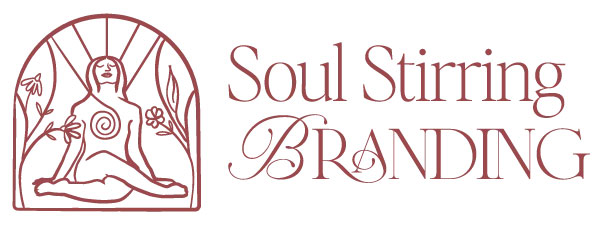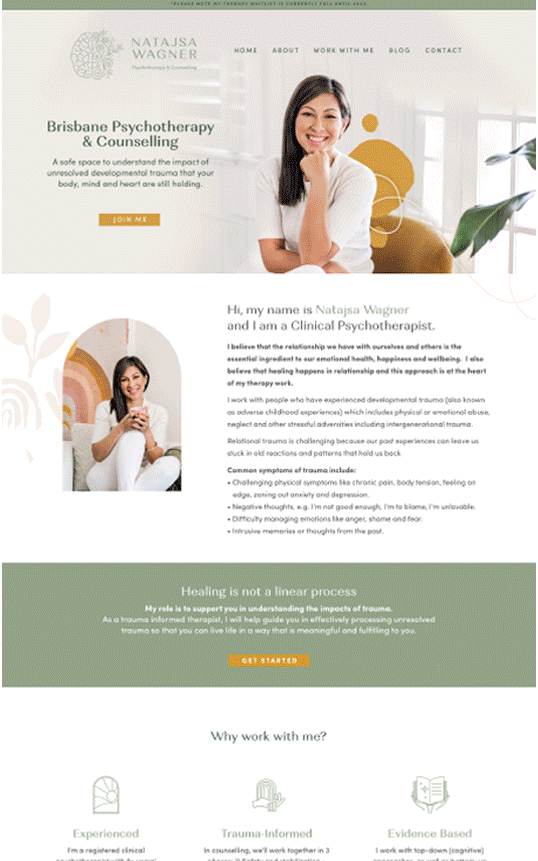Just how much you want to share can vary from professional to professional.
One of my questions in my branding workbook asks clients to document their “Empathy Builders” – sharing about how you might be able to relate to the problem your ideal client is facing. Often people help clients with the journey they have gone through themselves (though not always). This can be valuable information to share on your website to build trust and connection. But how you approach it may depend on your industry and your own comfort level.
Self-disclosure in therapy & counselling industries
Many therapists and counsellors feel torn about how to balance their desire for more heart, soul, storytelling and feeling in their website, with maintaining professionalism and boundaries. While clients in other industries are usually motivated to share some of their hardest moments in life, to show their clients/audience they can relate to their struggles, for therapists and counsellors this can be tricky, as self-disclosure can be a bit of an ethical grey area. I firmly believe this doesn’t mean we have to come across as cold and lifeless just to maintain professionalism.
According to Counselling Today “When used sparingly, professionally and appropriately, counselor self-disclosure can build trust, foster empathy and strengthen the therapeutic alliance between counselor and client.”

A few examples of how my therapy/counselling clients have approached this:
I’ve had a relationship counselling client sharing small funny stories of miscommunication between herself and her husband to build connection and show that every couple experiences challenges big or small.
I’ve had a psychotherapist client talking more broadly about having a ‘lived experience’ with trauma, without going into details.I’ve had a client share about their own experience with burnout and getting stuck in life, but choosing not to disclose difficult family experiences they have had.I’ve also had clients focus on how they have helped hundreds of clients in the reader’s shoes and how they are not alone, so building empathy in that way.
It’s all about finding an approach you and your client are going to feel comfortable with.
![]()
For other industries
If you’re in other industries, you may want to focus heavily on your backstory as a way to show your clients that they too can move beyond the struggles their facing. I believe there is no shame in sharing that you once struggled. It only adds credibility to your work that you have had that lived experience and hold a deep understanding of what your clients experience.
But remember, you don’t have to share every struggle and experience you’ve had. Ask yourself whether the story will help your client to feel less alone and have hope for their future, or whether it’s not relevant to your business and clients. Don’t feel pressured to share what you have not yet worked through or feel comfortable sharing (i.e. if it relates to someone else). There are many ways to build emotional connection and trust in your branding and website, and this is one technique.









